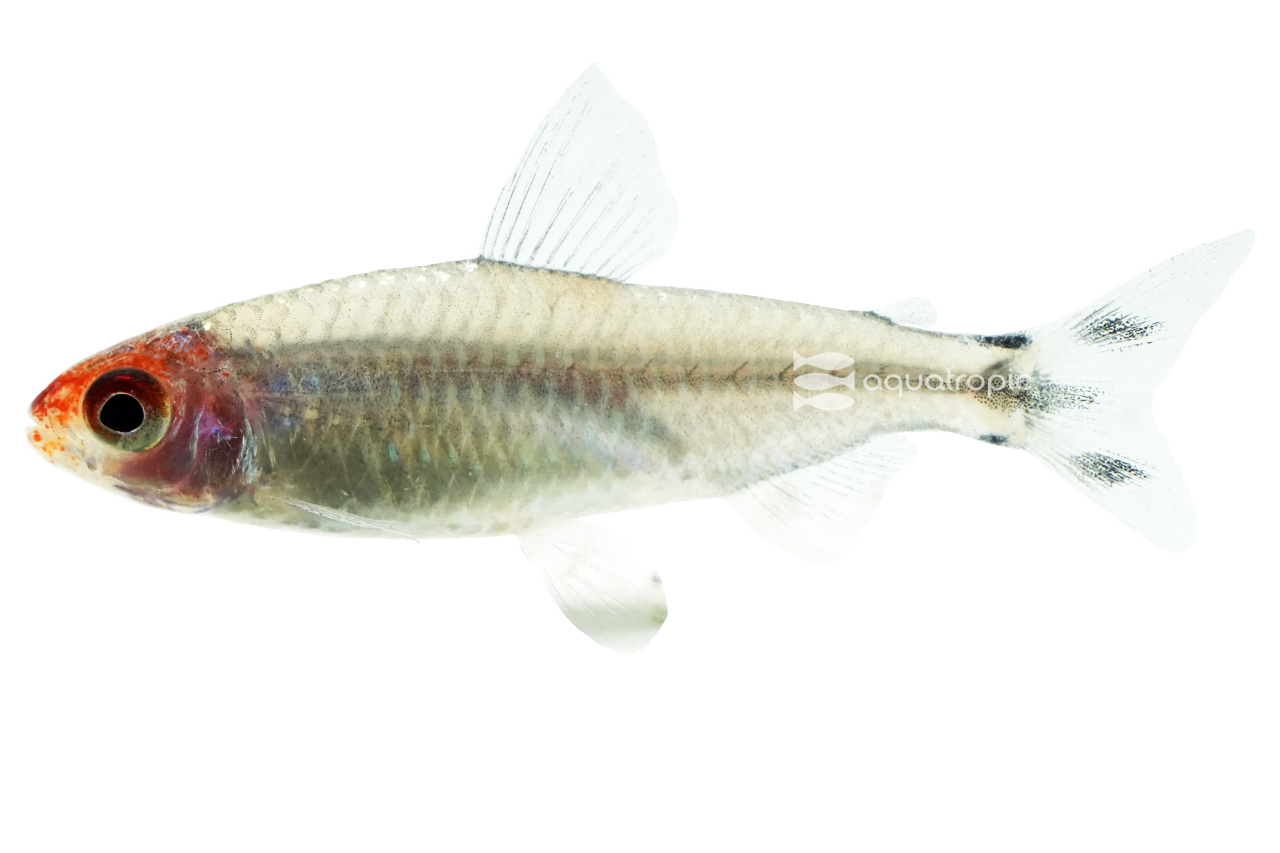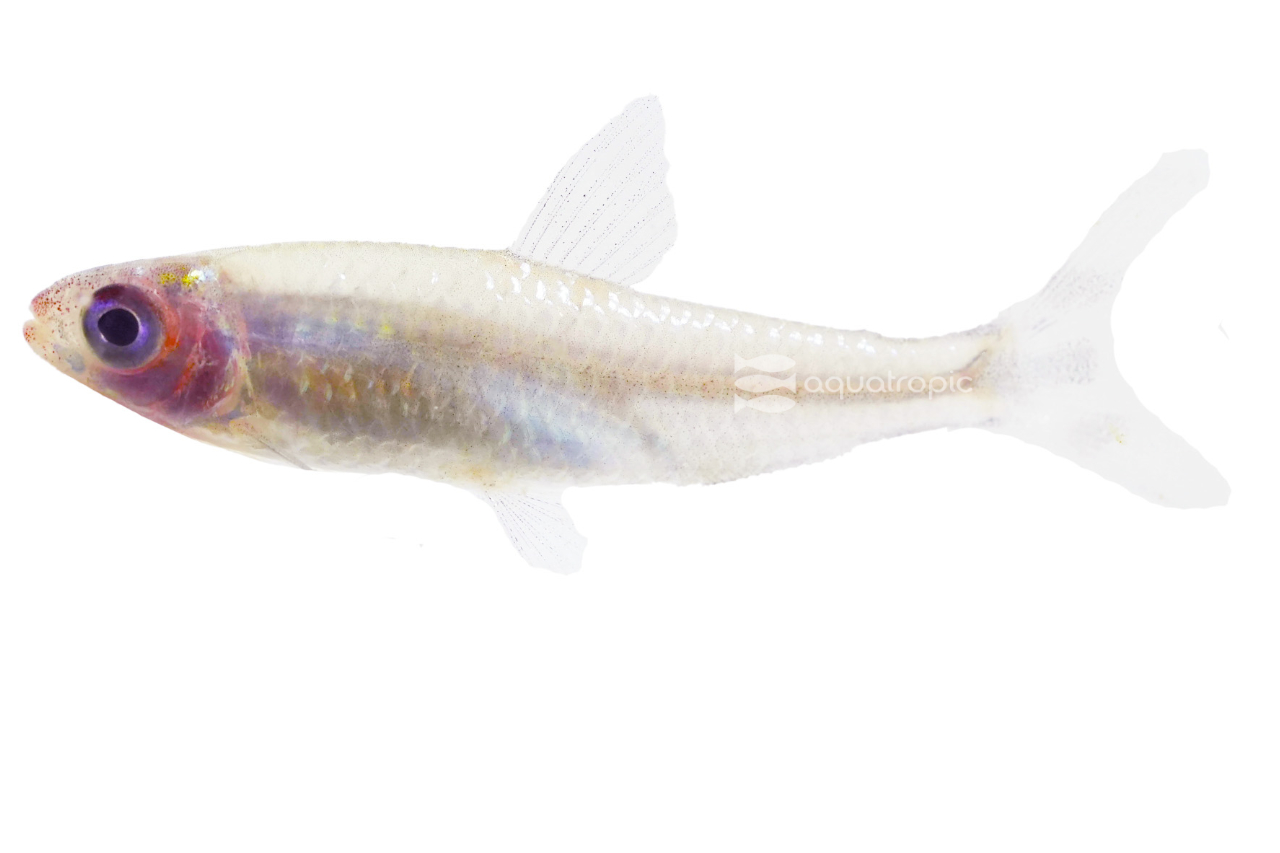The Rundown on Rummynose


We all love a Rummynose Tetra around here, whether they reside in a densely planted aquarium, or as a counterpoint in a Discus display and especially, in the wildly underrated, tea stained, driftwood heavy tank. Nothing schools like a Rummynose. What many people don't know, is that you actually have three species choices when picking Rummynose Tetras! First there is the “original Rummynose” species Petitella rhodostoma (previously known as Hemigrammus rhodostoma). There is also Brilliant Head Rummynose Tetra which has the binomial name Petitella bleheri. Brilliant Heads sometimes get shortened to just “Brilliant Rummynose.” The last of the three is Petitella georgiae, which is commonly called the False Rummynose Tetra.
There is a lot of information out there on how to differentiate the three, some of it is minutiae so fine you'd need to have a specimen that was dead to tell the difference. If you really want to geek out on the difference, (or you're trying to breed them and need to know), here's the easiest way. The spot where the tail fin meets the body is called the caudal peduncle. All three of these fish will have a spot on the top of this area, and two of them will have a spot on the top and the bottom, but the False Rummynose will be missing the spot on the bottom. Easy peasy. The easiest way to tell the other two apart is that the Brilliant Head's red coloration extends beyond their gill plate onto what most people would call their shoulders or the area above the pectoral fin (fish taxonomists call this the humeral region.) The “original” Rummynose's red will never extend to this spot. So, look at the spots where the tail attaches, and then look at where the red stops, and you'll know your species almost all of the time (there are always mutants, and then you're going to have to count teeth...) Most of the Rummynose Tetras you see in your local fish store have been aquacultured, and as a result, there are some variants available to you that aren't seen in the wild, and these will not necessarily show the traits we've spoken of here. If you find any of them labeled as Platinum or Albino, etc, these could be any of the above species, depending on what was originally bred to make the new variant.
Luckily for you, the care requirements for all three fish are very similar. Among all the Tetras, Rummynose's are famous for being some of the most tightly schooling, and while this school likes to move around, they do not need a massive amount of space. A group of a 10-15 could easily be kept in a 30-gallon tank. They are somewhat susceptible to water quality issues, and if nitrates start to get too high, they are likely to start losing color. Keep up the regular water changes and maintain nitrates under 10-15ppm. These fish will also show their best colors in water than is slightly acidic (which makes them excellent fits for stained water displays, a very natural setting for them). They can certainly live in a neutral pH tank, but we suggest trying to keep your pH between 6.0 and 7.0. Like almost all the other Tetras, this is a warm water fish, and you should aim to keep your display between 75 and 82 degrees (Fahrenheit obviously, we're writing this in the USA).
Tetras need to be kept in groups, and this is especially true of Rummys. You should always have at least a dozen, and more up to the capacity of your tank is always a good idea. Some aquarists recommend keeping them in odd numbers, but we have not found this to be a meaningful factor in keeping them successfully. They mix well with other species of Tetra, but at least 12 of them should be other Rummynose Tetras and yes, you can mix species. They also do well with other peaceful fish like Corydoras, Discus, even some dwarf cichlids. They will not do well with very aggressive fish like most Rift Lake Cichlids. They won't bother plants and are great additions to these tanks.
A varied diet is another key to keeping your Rummynose Tetras brilliantly colored. Here we feed them a variety of frozen foods from Gamma. Their full selection of augmented Brine Shrimp are used here as well as the Copepods, Cyclops, and Daphnia among others. The key element is to get them nutritious food that is small enough for them to easily eat. You can and should supplement this diet with a high-quality flake or pellet like Nutramar Complete. In house we feed these fish twice a day, and this is a good schedule for you at home as well.

For those of you interested in breeding Rummynose Tetras, this is within the reach of most moderately experienced hobbyists. You'll need a separate display, as Rummynose Tetras of all species are notorious cannibals and will eat both the eggs and the fry. Most commonly a net or mesh is used suspended above the bottom of the tank to let eggs fall through but preventing the adults from getting to them. Adults should be removed from the spawning tank after egg laying. Eggs should hatch after a day or two, and babies will be free swimming a couple days after that. They'll need tiny food at that point, and so look into our articles on homegrown food elsewhere here on the website. The installment on infusoria is a great place to start.
Regardless of whether you choose one species of Rummynose, or all three, these are iconic aquarium fish, suitable to a wide range of displays and bring activity and amazing color to whatever tank you put them in. Frequently newly shipped fish won't show the brilliant red heads, if you see them like this in your local fish store, you needn't be concerned, they will color up in short order. Rummynose Tetras often get called sensitive, but we think this is mostly a misnomer. They are not a difficult fish to have in your tank as long as you feed well and keep up with basic maintenance. The time has come, and you need some Rummy's in your tank. Head over to your Local Fish Store and ask them to get you some from Aquatropic today.